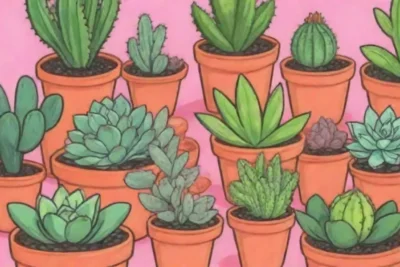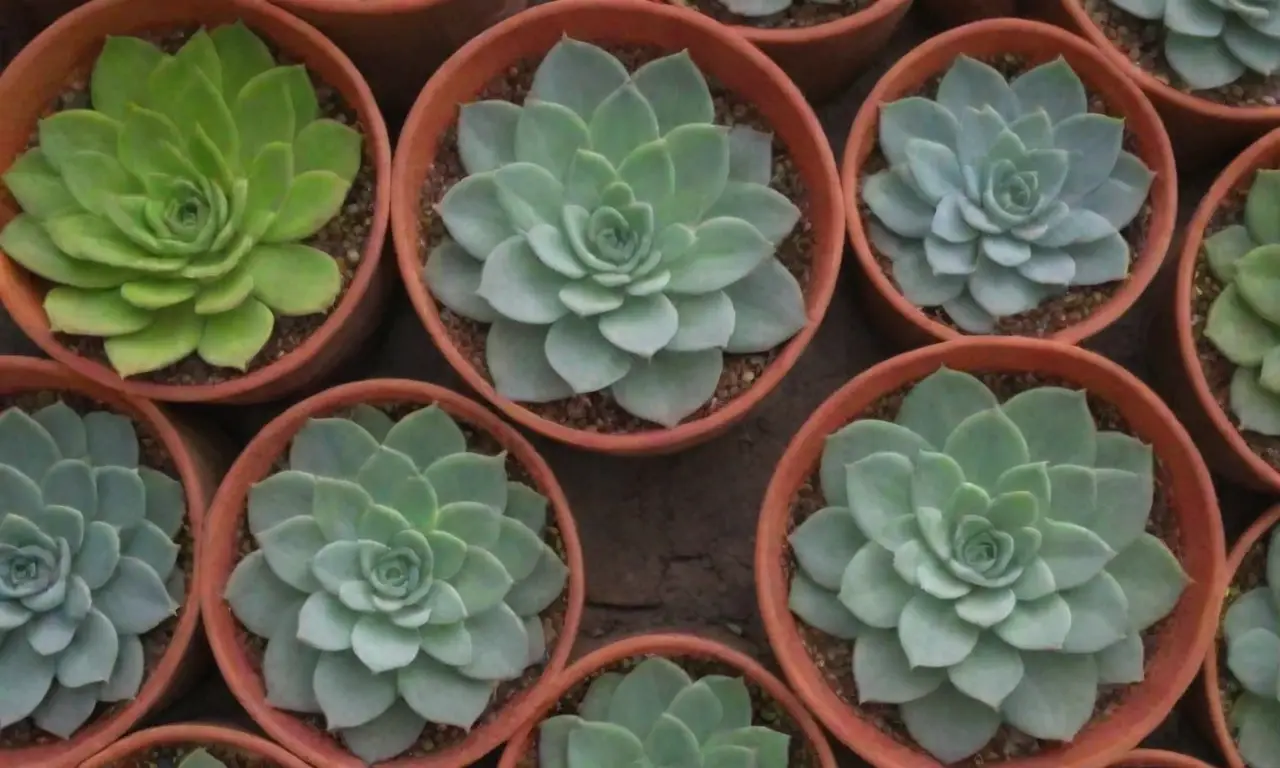
Creative Ways to Use Pruned Succulent Leaves for Propagation

Introduction
Succulents, known for their thick, fleshy leaves and unique adaptability, are one of the most popular houseplants in the world. Their ability to thrive in arid conditions, coupled with their stunning appearances, has led to a growing enthusiast community. While many love these plants for their visual appeal, not everyone knows about the remarkable potential that lies within the leaves that are pruned away during routine maintenance. Instead of discarding these leaves, they can be effectively used for propagation, allowing you to grow new plants at little to no cost.
This article will delve into various creative methods to propagate succulents using pruned leaves, offering insights into why and how to harness this natural process. By understanding the basics of succulent propagation, you will not only improve your plant care skills but also expand your succulent collection in an eco-friendly and economical way.
Understanding Succulent Propagation
Succulent propagation is the process through which new plants are generated from existing ones, and it can occur through several methods. The most common techniques include leaf cuttings, stem cuttings, and offsets, each having its unique advantages and challenges. When it comes to leaf cuttings, it is important to recognize that succulent leaves possess the ability to develop roots and produce new plants when given the right conditions.
During routine maintenance, succulent leaves often fall off or may need to be removed for various reasons, such as to promote growth or to tidy up the plant’s appearance. Instead of tossing these leaves into the compost bin, they can serve as a sustainable source for new plants. To effectively propagate using pruned leaves, understanding the anatomy of succulents, their watering needs, and the right conditions for rooting is crucial.
Successful propagation depends on factors like light, temperature, and moisture levels. Succulents prefer bright, indirect sunlight and thrive in warmer temperatures, which makes homes with ample daylight ideal environments for them. By recreating these conditions and following specific propagation techniques, you can significantly increase your success rate in growing new succulents from pruned leaves.
Step-By-Step Leaf Propagation Techniques
Leaf Cutting Method
One of the most effective methods for using pruned succulent leaves is the leaf cutting method. This process involves the careful detachment of a healthy leaf from the mother plant followed by its placement in a suitable growth medium. To begin, select a healthy leaf that is free from pests or disease. Gently twist the leaf from the stem, ensuring that the entire connection point is clean and intact. Leaves that are partially torn or have been damaged will often fail to propagate.
After removing the leaf, allow it to sit in a dry location for about three days. This step is crucial as it allows the leaf's cut end to callous over, reducing the risk of rotting once it is placed into the soil. When the callusing process is complete, prepare a tray or pot filled with a well-draining potting mix, such as a cactus soil blend or a mix of perlite and regular potting soil.
 Best Pruning Schedules to Follow for Your Succulent Collection
Best Pruning Schedules to Follow for Your Succulent CollectionOnce you have your soil ready, gently lay the calloused leaf on top without pressing it into the soil. Lightly mist the soil to provide some moisture, but avoid oversaturation, as succulents are vulnerable to root rot in wet conditions. Place the tray in a warm area with bright, indirect sunlight. As water and nutrients are absorbed through the leaf, roots will begin to form, and eventually, small plantlets will sprout at the base of the leaf. Monitor the process and provide minimal watering as needed until the new plants are established enough to transfer to their own pots.
Water Propagation
Water propagation is another creative technique that involves placing pruned succulent leaves in water to develop roots before transferring them to soil. While this method is slightly more challenging, it can be an exciting experiment for many succulent lovers. To start, select healthy leaves and allow them to callous just as you would for the leaf cutting method.
Once calloused, prepare a shallow dish or container filled with clean, room-temperature water. It’s essential to use a container that is wide and shallow enough to accommodate the leaves without crowding them, as good airflow is crucial for successful propagation. Place the leaves in the water, ensuring that the cut ends are submerged while the leaf body remains above the water line. This prevents rot from occurring.
During this propagation method, it is critical to change the water every few days to keep it fresh and prevent stagnation. After a couple of weeks, you should start to see tiny roots emerging from the cut ends of the leaves. Once the roots reach a few inches in length, typically around two to three weeks later, transfer the newly rooted leaf into a well-draining soil mix, allowing it to establish a healthy, new plant.
Using a Propagating Station
A beautifully curated propagating station can also be an artistic solution to using pruned succulent leaves. In this method, you create a visually appealing setup where you can propagate succulent leaves while showcasing them as part of your home decor. For this, you’ll need glass jars or test tubes filled with water, which can be hung or displayed on a shelf. This not only provides an aesthetically pleasing arrangement but also allows you to observe the rooting process closely.
Follow the same steps as described in the water propagation method: allow your leaves to callous and then place them in the jars with the cut ends submerged. Using a variety of shaped containers can add visual interest and make for a conversation piece among guests. Regularly tend to the roots and change the water, and soon you’ll have a stunning display complete with new baby succulents that can later be potted in individual pots.
Additional Creative Uses for Pruned Leaves

 A Beginner's Journey into Succulent Pruning Techniques
A Beginner's Journey into Succulent Pruning TechniquesCrafting with Succulent Leaves
Another innovative avenue for pruned succulent leaves is to use them for craft projects. Succulent leaves can add a unique element to artistic projects like terrariums, wreaths, or seasonal decor. By incorporating them into your crafts, not only are you minimizing waste, but you are also infusing your space with the natural beauty and tangibility of succulents.
For instance, you can create stunning succulent wreaths where dried or lightly preserved leaves are displayed creatively on a circular frame. This not only beautifies your environment but also allows dormant leaves to root over time, giving you new plants in the process. Terrariums can also provide an excellent setting for such projects; you can showcase your leaf cuttings in glass containers, layering them with sand, rocks, and soil while providing humble yet captivating beauty to your living room or workspace.
Experimenting with Mixed Media
If you enjoy art but prefer a more hands-on approach, you might explore the concept of mixed media with succulent leaves. Use pruned leaves along with paints, fabrics, or other natural materials to express your creativity. The vibrant green of succulent leaves can contrast beautifully with the background of textiles or colors, bringing vibrancy to your work.
One creative idea is to press the leaves and use them as stamps, creating textured art on paper or canvas. By mixing soil-based mediums into your art projects or embedding preserved leaves into your artwork, you can solidify your connection to nature in a creative and meaningful way. This process not only celebrates the beauty of your succulents but also allows you to use every part of the plant, reflecting a sustainable approach to gardening and creative expression.
Conclusion
In conclusion, utilizing pruned succulent leaves for propagation is not only a sustainable practice but also an incredibly rewarding endeavor for plant enthusiasts and hobbyists alike. From using the leaf cutting method to experimenting with water propagation and showcasing leaf cuttings in artistic settings, there are ample opportunities to engage with your succulents in creative ways. As you navigate this process, it is important to remember the basic principles of succulent care, including light, moisture, and temperature, to maximize your success rates.
Moreover, these creative methods not only help contribute to the environment by reducing waste but can also be a source of joy and fulfillment. The journey from leaf to new plant is a tangible representation of growth, renewal, and the natural cycle of life. Each successful propagation creates a deeper connection between you and your plants, fostering a heartfelt appreciation for their beauty and resilience.
So the next time you find yourself pruning your beloved succulents, consider reserving those leaves for propagation. You can indulge in creativity, nurture new growth, and expand your plant family affordably and sustainably. As you embark on this wonderful journey of succulent propagation, remember to share your findings and experiences with others, contributing to the growing community of succulent lovers around the globe. Happy planting!
 Pruning and Watering: Techniques for a Successful Succulent Care
Pruning and Watering: Techniques for a Successful Succulent CareIf you want to read more articles similar to Creative Ways to Use Pruned Succulent Leaves for Propagation, you can visit the Pruning tips category.


You Must Read